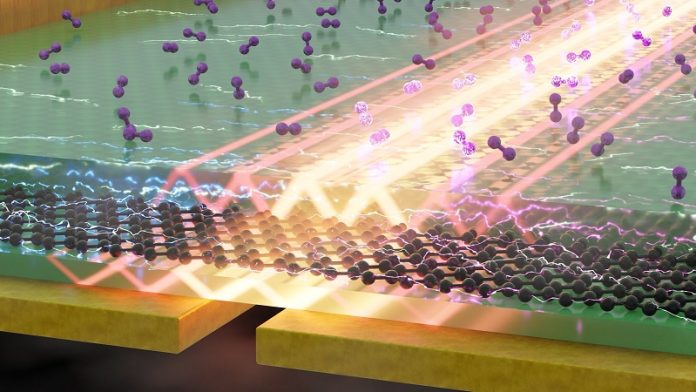
Scientists have created a groundbreaking chip-sized device that can identify molecules using their unique infrared “fingerprints.”
Molecules vibrate in specific ways when exposed to infrared light, creating a kind of signature that can distinguish one type of molecule from another.
This new device, developed by an international team of researchers, makes it easier than ever to detect and analyze these molecular fingerprints.
The innovation relies on phonon polaritons, a special type of light wave that interacts with atomic vibrations in a material.
The device uses a thin layer of a material called hexagonal boron nitride (h-BN) to convert regular infrared light into tightly focused “nanolight.”
This nanolight significantly amplifies the molecular vibrations of even extremely thin molecular layers, making them easier to detect.
What makes this device stand out is its ability to operate at room temperature and its compact size.
Traditional infrared detectors require bulky equipment and cooling systems, which limit their practicality.
By contrast, this chip-based detector is small enough to fit on a microchip and can function without specialized cooling.
When light shines on a molecule, the molecule vibrates in a specific way, similar to how human fingerprints are unique to each person.
These vibrations can reveal what the molecule is. Conventional methods, like infrared fingerprint spectroscopy, use light reflections or transmissions to identify molecules.
However, these techniques often struggle with small samples because the infrared wavelength is much larger than the molecules, resulting in weak signals.
To overcome this, scientists have used Surface-Enhanced Infrared Absorption (SEIRA) spectroscopy, which boosts molecular signals by using metal surfaces or nanostructures.
The new device goes a step further by integrating phonon polaritons directly into the detector, making it even more sensitive without the need for additional bulky equipment.
This device could transform molecular detection.
By combining the detector with microfluidic channels, it could become a “lab-on-a-chip,” identifying molecules in tiny liquid samples. This could lead to advances in medical diagnostics and environmental monitoring.
Looking ahead, researchers hope to integrate this technology into smartphones or wearable devices, enabling fast and portable molecular detection.
“Room-temperature detectors like this could revolutionize infrared spectroscopy, making it more accessible and versatile,” said one of the lead researchers, Dr. Andrei Bylinkin.
This cutting-edge development marks a major step toward compact, efficient tools for identifying molecules in everyday applications.
Source: KSR.



